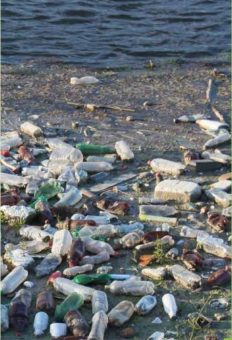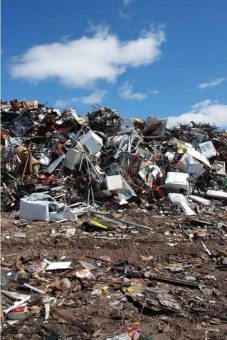
Although EcoHealth is significant for all living beings on the planet, the general public is not yet sufficiently familiar with the concept and term of this multidisciplinary field.
The multiplication of the number of the inhabitants of the Earth over the past hundred years is accompanied by the exponential increase in the influence of a man on the environment. Satisfying everyday human needs requires a huge amount of resources that can not be restored during our lifetime. The effects of these global changes are multiple – temperatures are rising, oceans become more acidic, natural cycles of nitrogen and phosphorus have been substantially altered, almost a third of tropical forests and fifth of coral reefs have been lost, and numerous animal and plant species gradually disappear.
Human impact on the planet is so powerful that we speak more and more often about the new geological epoch – the Anthropocene. But, when impacting on the environment and changing its characteristics, changes are taking place in the opposite direction, as well – the state of the environment has a major impact on the quality of life and the health of the human population. Although the largest number of definitions describing the casual and consequential mechanisms is not entirely homogenous in our language, today we most often call the described multidisciplinary field EcoHealth.
In order to better understand the environmental impacts on health, it is necessary to move the focus, that is most often on individual behaviour, to social environment, the way of life and the satisfaction of physiological needs and to the physically created, artificial environment, consisting of housing, offices, schools, farms and factories, road infrastructure, as well as land use and waste management practices. Factors of the environment that contribute to EcoHealth are complex, but with the pollution analysis, we most often continue to deal with it by approaching in a way that is most common in traditional ecology science.

Pollutant substances in the air cause numerous negative effects on plant, animal species, and humans, but also on other environmental factors, such as facades of buildings and cultural monuments, where damage, such as corrosion, is caused due to these effects.
Air pollution can first be observed on plants, because morphological changes of colour, the extinction of certain tissues are rapidly showing, due to plant-cell disorders. The effect of air pollution on the human organism is reflected in the appearance of respiratory diseases (asthma, bronchitis, emphysema, lung cancer) because most of the harmful substances are inhaled.
According to estimates of the World Health Organization, in Serbia due to the influence of air pollution leads to the earlier death of about 5,400 people. Over the past decade, research on the effect of nitrous oxides, sulphur dioxide and ozone on health was carried out in our country, and in 11 industrial cities, particle pollution analysis (PM10) was also carried out, as one of the biggest health threats.
Research has shown that a problem is also an insufficient number of automatic measuring stations of air quality, as well as inadequate use of existing stations.

A human being, like all other living beings, is supplied with water from the environment, and in the quality of that water, the state of our watercourses and the water supply system is reflected. In drinking water, including bottled, we can expect certain admixtures of harmful substances, which are monitored in accordance with the regulations adopted from the EU Water Framework Directive. If watercourses are loaded with faeces, pathogenic cells and bacteria, viruses and other parasites, they present an epidemiological threat as they cause numerous infections of the skin and digestive tract. In a diverse composition of natural waters, there are also some radioactive minerals, such as radon, which accumulates in underground wells, and pose a threat to the DNA structure of the human body. After continuous exposure to low doses of arsenic, often present in groundwater, headaches and neurological disorders, liver dysfunction, respiratory and reproductive systems may occur. The presence of lead is occasionally a problem in settlements with decrepit water pipes, made precisely from this element.
A large environmental burden is also the untreated wastewater from settlements and industries, which are discharged into rivers since less than 10 percent of wastewater in Serbia is purified. Also, there is a significant deviation in the quality of water supply for urban and rural areas.

The soil, as the basis of agricultural production, and thus the survival of the human race represents a significant natural asset that is being restored very slowly.
The main damage to the soil is caused by pollution of soil and air, erosion, salinization, excessive urbanization, and floods. Pollution can result in its degradation, destruction or temporary or complete deactivation of the soil from the function. Desertification is a burning problem caused by the rise in temperature, caused by climate change.
The illicit practice of disposing of waste to wild landfills leads to soil contamination. During the precipitation, pollutants, pesticides, and other widely used chemicals are washed away up to the first layer of groundwater, which are often sources of water supply, which can result in epidemics of diseases caused by the use of contaminated drinking water. The introduction of a systemic change in the soil management is of great importance for Serbia, due to the great potentials for the development of agricultural production.
Marija Nešović
This content was originally published in the eighth issue of the Energy Portal Magazine ECOHEALTH, in November 2017.

